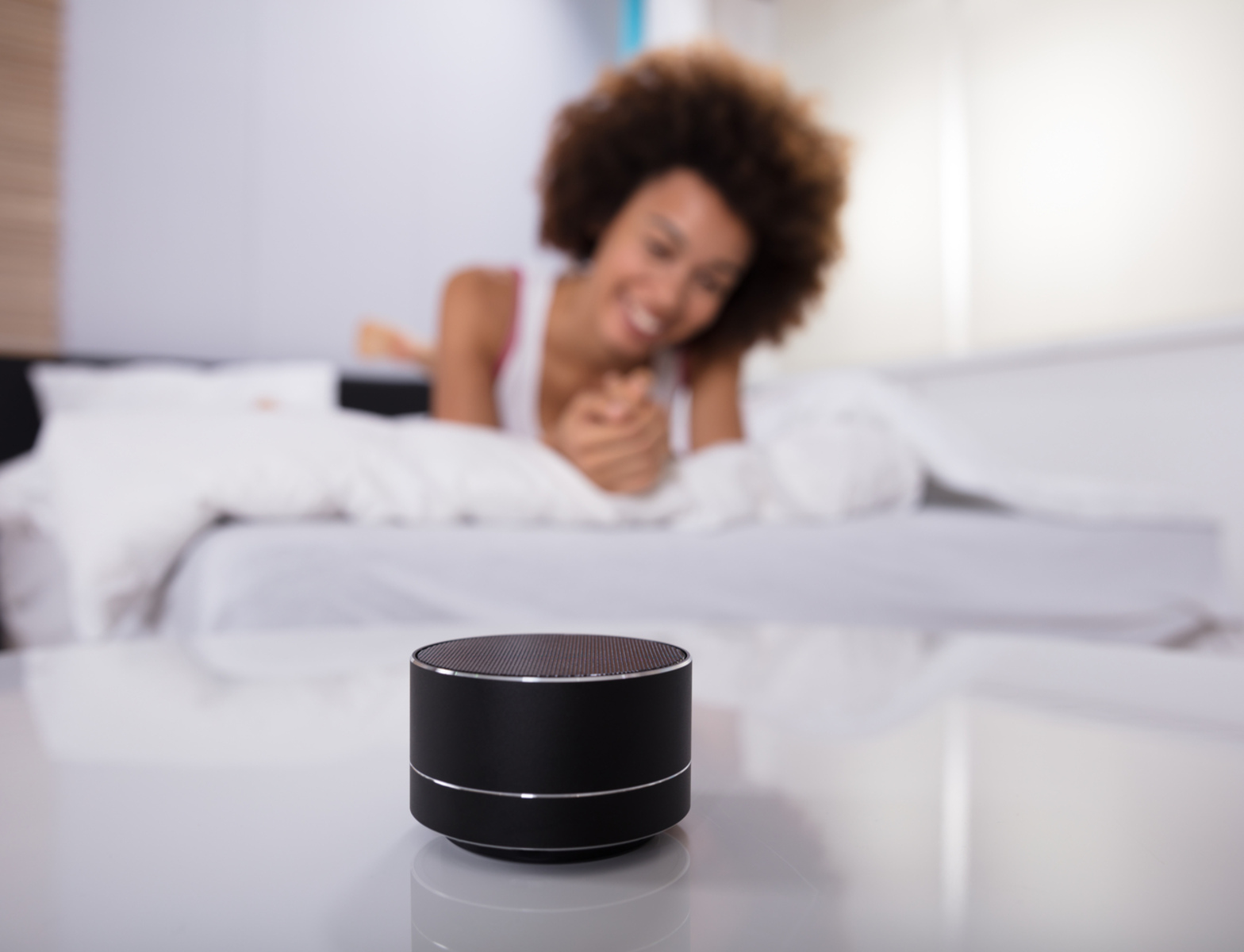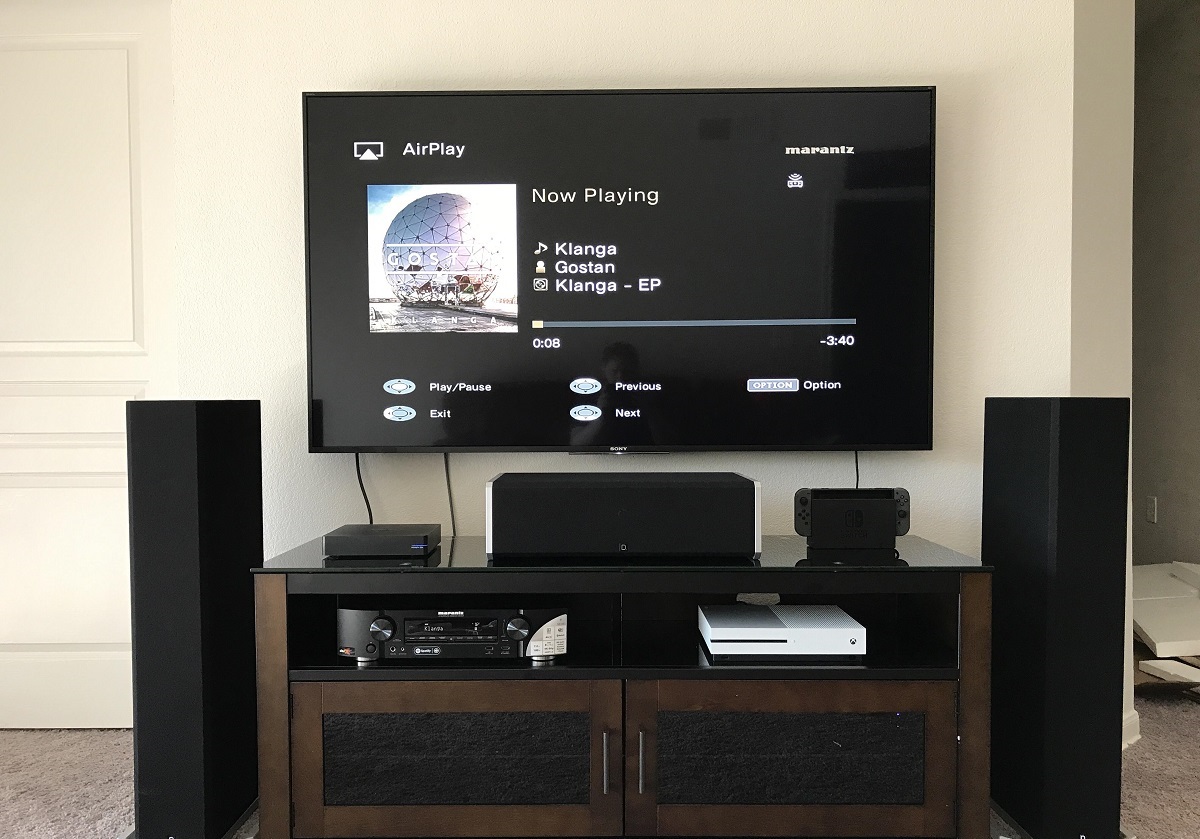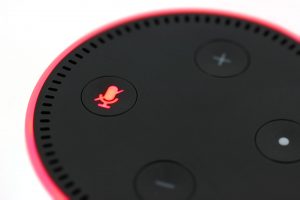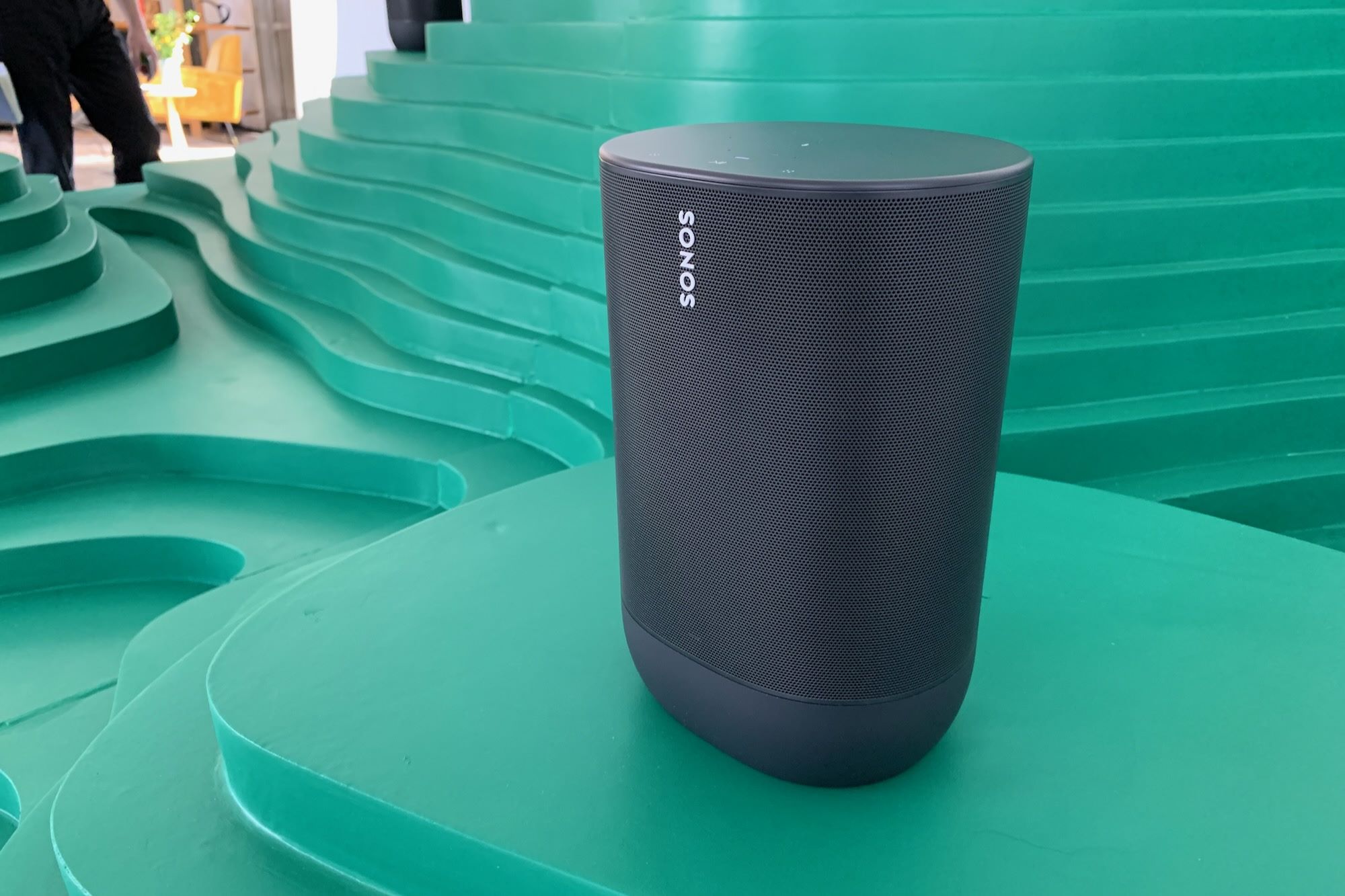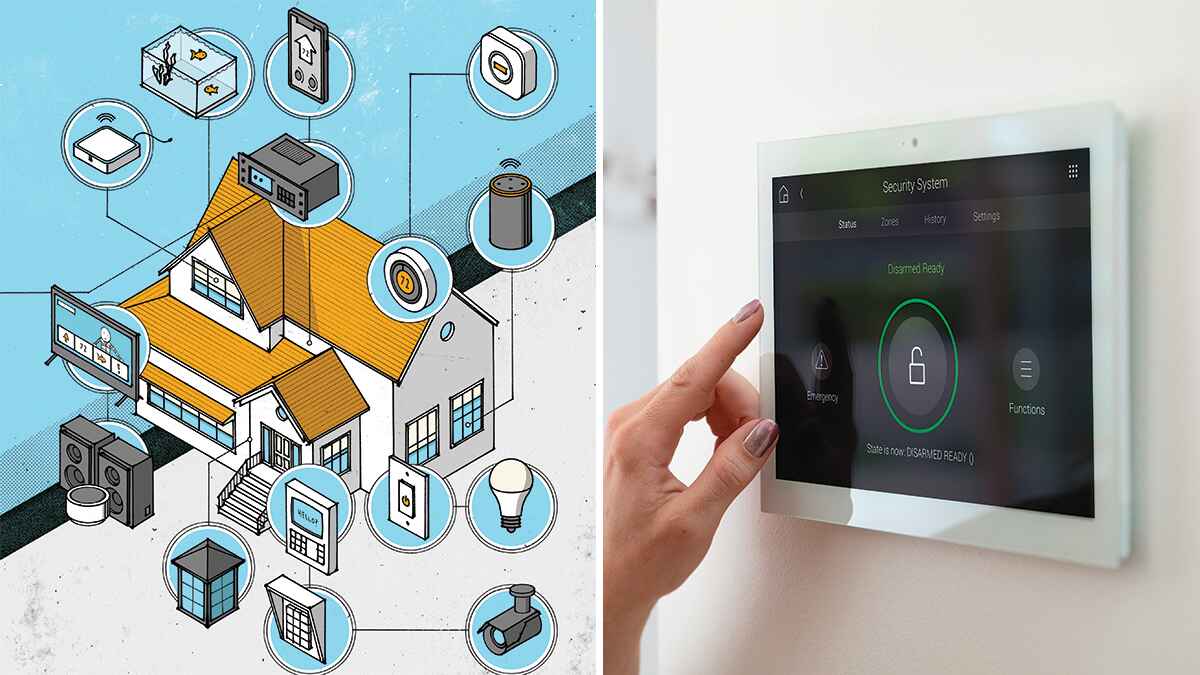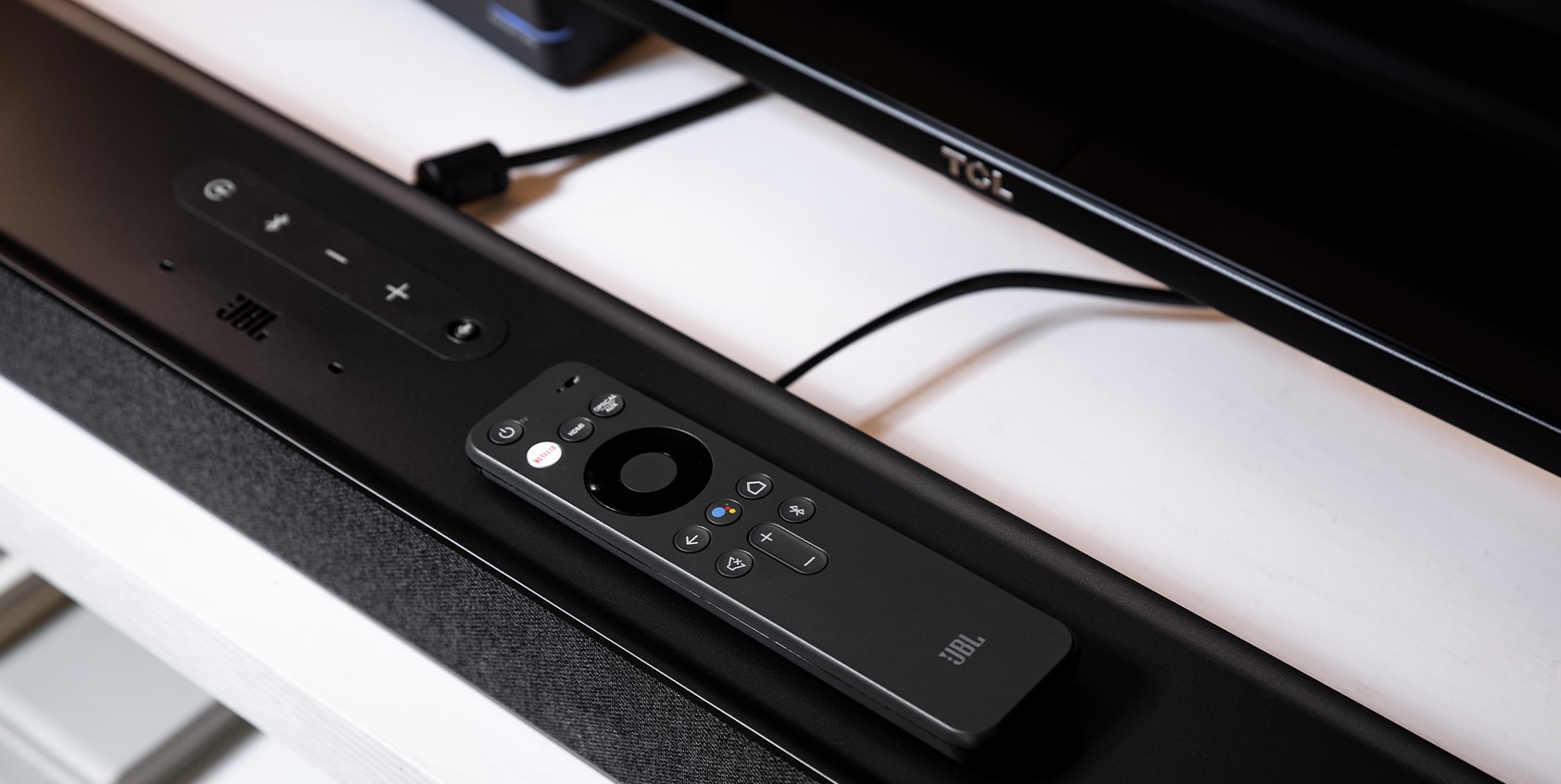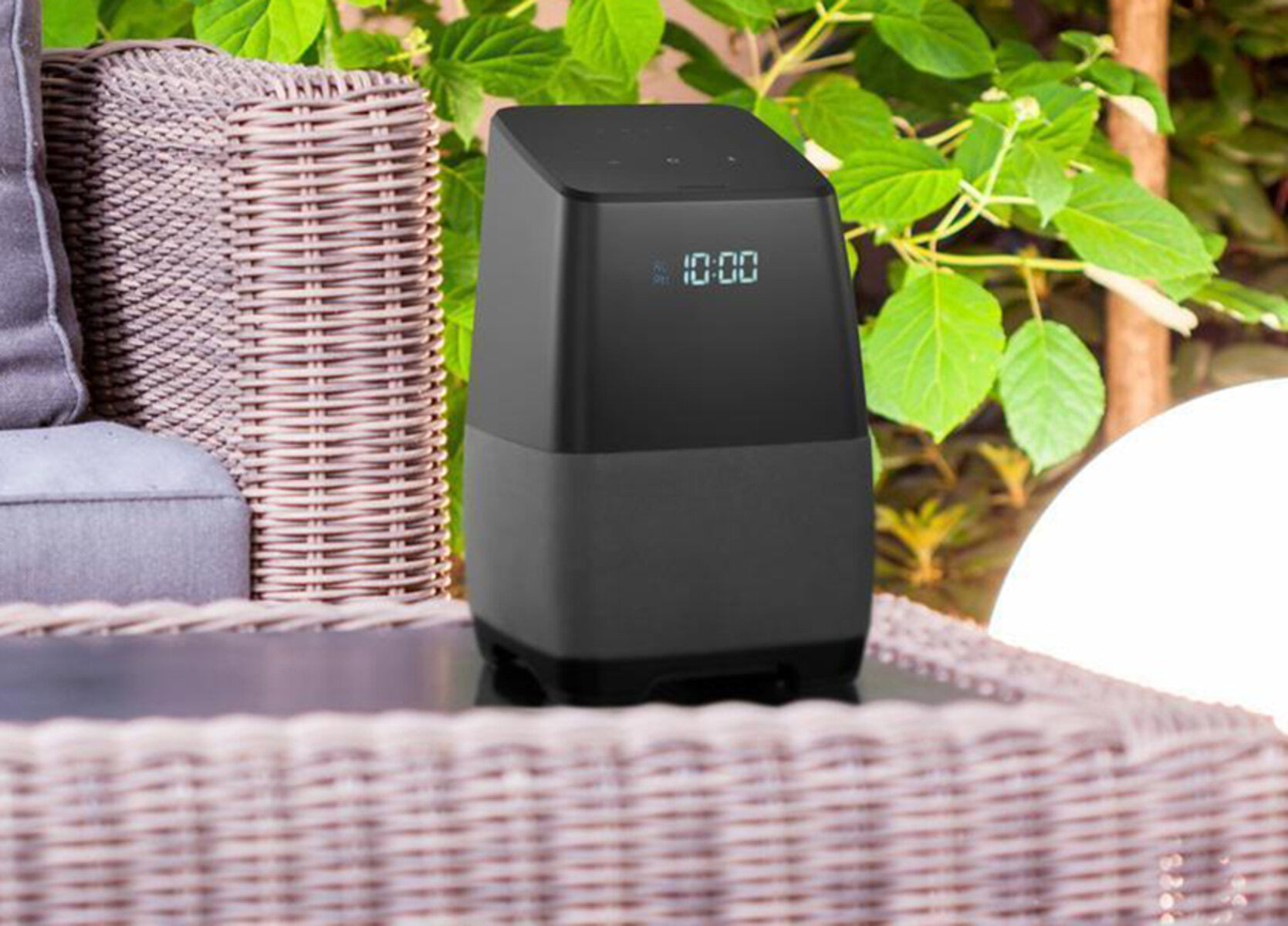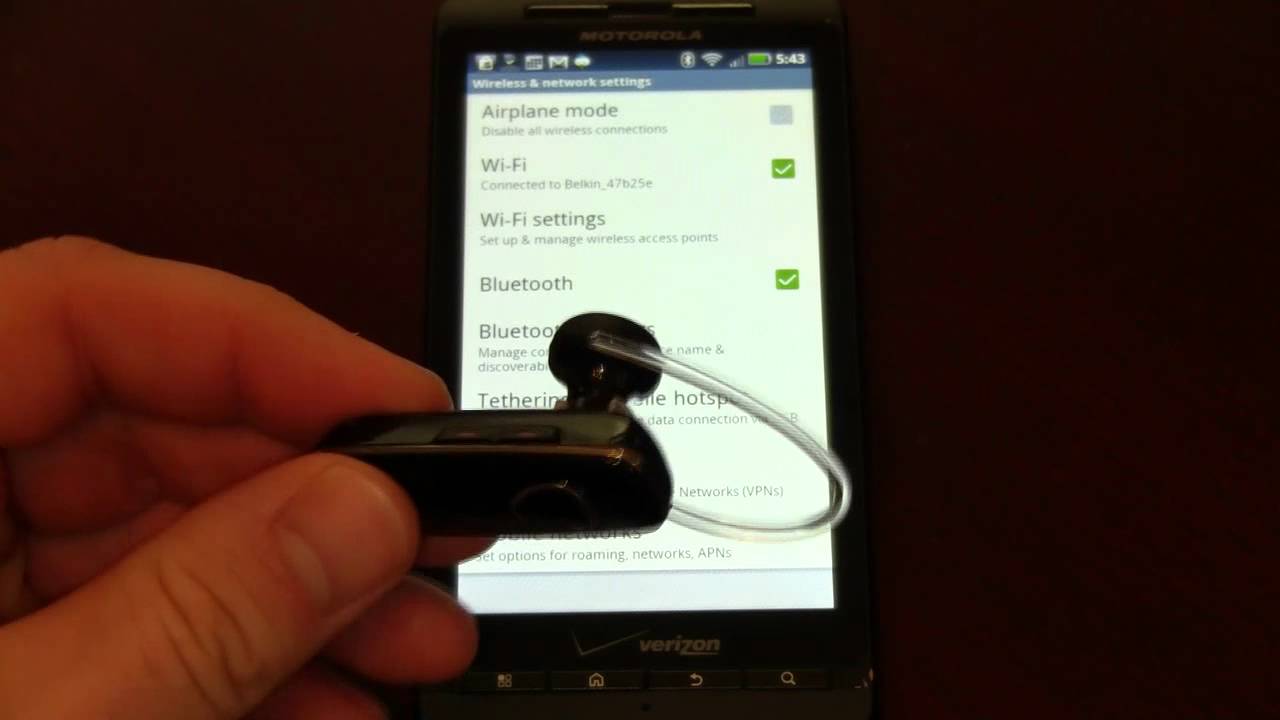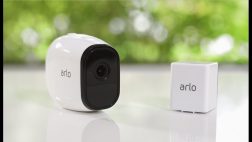Introduction
Smart speakers have become a ubiquitous part of many households, offering convenience and entertainment at our fingertips. With their voice-activated capabilities and integration with various smart devices, these devices, such as Amazon Echo, Google Home, and Apple HomePod, have gained immense popularity. However, the rising popularity of smart speakers has also raised concerns about privacy and security risks.
As with any connected device, smart speakers can be vulnerable to cyberattacks and unauthorized access. From voice recording and data collection to potential hacking attempts, the security implications are vast. Therefore, it is crucial for users to understand the potential risks and take the necessary steps to enhance the security of their smart speakers.
In this article, we will explore the various security risks associated with smart speakers and discuss best practices to improve their security. By following these guidelines, users can better safeguard their privacy and protect their smart speakers from potential threats. From enabling two-factor authentication to regularly updating firmware and software, there are several actions users can take to enhance the security of their smart speakers.
While no security measure can provide absolute protection, implementing these recommended practices will significantly reduce the chances of falling victim to cybercrimes and unauthorized access. Let’s delve into the details of smart speaker security and the steps users can take to mitigate the associated risks.
Understanding Smart Speaker Security Risks
While smart speakers offer convenience and seamless integration with our daily lives, they also come with inherent security risks. One of the primary concerns is the possibility of unauthorized access to user’s personal information and conversations. Smart speakers are constantly listening for their wake word, which means they are potentially recording and storing audio data. This data can be vulnerable to hacking or misuse if not adequately protected.
Another risk arises from the potential for third-party apps or skills to gain access to sensitive information. Smart speakers allow users to install and enable various apps and skills to expand their features and functionalities. However, if a malicious app or skill is installed, it can potentially access and misuse personal data, compromising user privacy.
Furthermore, smart speakers are often connected to other smart devices within a home, such as smart locks, thermostats, or security systems. If a hacker gains access to a smart speaker, they may be able to control these devices, posing a significant security risk to the entire smart home ecosystem.
Lastly, there is also a concern regarding the security of the communications between a smart speaker and the cloud services it relies upon. If these communications are not adequately encrypted, hackers could intercept sensitive information or manipulate device commands.
Understanding these risks is crucial for smart speaker users. By being aware of the potential vulnerabilities, users can take appropriate measures to protect their privacy and secure their smart speakers from potential threats. In the following sections, we will explore best practices for improving smart speaker security to mitigate these risks effectively.
Best Practices for Smart Speaker Security
To ensure the security and privacy of your smart speaker, it is important to implement best practices that help mitigate potential risks. By following these guidelines, you can enhance the security of your device and protect your personal information.
Enable Two-Factor Authentication: Two-factor authentication adds an extra layer of security by requiring a second verification step, such as a code sent to your smartphone, when logging into your smart speaker account. This helps prevent unauthorized access even if your password is compromised.
Choose Strong and Unique Passwords: Create strong and unique passwords for your smart speaker account to make it more difficult for hackers to gain access. Avoid using easily guessable passwords and consider using a password manager to securely store your credentials.
Regularly Update Firmware and Software: Keep your smart speaker’s firmware and software up to date. Manufacturers often release updates that include security patches and bug fixes. Set your device to automatically install these updates to ensure you have the latest security improvements.
Limit Access to Smart Speaker: Be cautious about who you grant access to your smart speaker. Only share your account credentials with trusted individuals and avoid giving access to unfamiliar or unverified third-party apps or individuals.
Audit Smart Speaker Skills and Apps: Regularly review and audit the skills and apps enabled on your smart speaker. Remove any unnecessary or suspicious apps to reduce the chances of a malicious app gaining access to your personal information.
Practice Safe Smart Speaker Web Browsing: If your smart speaker has a screen or browsing capabilities, use caution when browsing the web. Avoid clicking on suspicious links or providing personal information on untrusted websites to mitigate the risk of phishing attacks or malware downloads.
Secure the Wi-Fi Network: Ensure that your Wi-Fi network is secure by using encryption and a strong password. This prevents unauthorized access to your smart speaker and other connected devices within your network.
Monitor and Review Privacy Settings: Regularly review the privacy settings of your smart speaker and adjust them according to your preferences. Disable any features that you are uncomfortable with and limit the data collection and usage permissions to maintain control over your privacy.
Encrypt Smart Speaker Communications: If available, enable end-to-end encryption for the communications between your smart speaker and the cloud services it relies upon. This helps ensure that your data remains confidential and protected from interception or manipulation.
By implementing these best practices, you can significantly improve the security of your smart speaker and better protect your personal information. However, it is important to remain vigilant and stay informed about emerging security threats to adapt your security practices accordingly.
Enabling Two-Factor Authentication
Two-factor authentication (2FA) adds an extra layer of security to your smart speaker account by requiring a second verification step in addition to your password. This feature provides an additional barrier against unauthorized access, even if your password is compromised.
To enable 2FA, start by accessing the settings or security options of your smart speaker’s associated app or web portal. Look for the option to enable two-factor authentication or commonly referred to as 2-step verification. Once enabled, you will typically have the option to receive the second verification step through a text message, email, or dedicated authentication app.
When you log in to your smart speaker account, you will be prompted to enter the verification code alongside your password. This code is usually time-sensitive and should be entered within a specific time frame. By requiring this additional step, even if someone has access to your password, they won’t be able to log in without the corresponding verification code.
Enabling 2FA is a crucial step in securing your smart speaker account. It adds an extra layer of protection that significantly reduces the chances of unauthorized access, especially in the event of password leaks or breaches of other online accounts.
It is important to note that some smart speakers may have specific requirements or compatibility limitations for 2FA. Ensure that your device supports this security feature and follow the instructions provided by the manufacturer for a seamless activation process.
Remember to store your recovery codes in a safe and accessible place. These codes can be used to regain access to your account in case you lose access to your primary verification method or if your device gets stolen. Be sure to keep these codes secure to prevent unauthorized access.
Enabling 2FA is a relatively simple and effective way to enhance the security of your smart speaker account. By adding this additional layer of verification, you significantly reduce the risk of unauthorized access and help protect your personal information and privacy.
Choosing Strong and Unique Passwords
Choosing strong and unique passwords for your smart speaker account is essential for maintaining the security of your device. A weak or easily guessable password can make it easier for hackers to gain unauthorized access and compromise your personal information. Here are some best practices for creating strong and unique passwords:
Avoid common passwords: Stay away from using common and easily guessable passwords such as “password,” “123456,” or your birthdate. These passwords are easily cracked by hackers and should be avoided at all costs.
Use a mix of characters: Create a password that includes a combination of uppercase letters, lowercase letters, numbers, and special characters. Mixing different types of characters makes your password more complex and harder to guess.
Don’t use obvious personal information: Avoid using personal information like your name, birthdate, or address in your password. This information is often readily available to hackers and can be easily exploited.
Make it lengthy: The longer your password, the more secure it tends to be. Aim for a minimum of eight characters, but ideally, create a password that is 10-12 characters long.
Avoid dictionary words: Dictionary words or common phrases are easily guessed by hackers using automated password-cracking tools. Instead, consider using a combination of unrelated words or phrases to create a unique password.
Use a password manager: Consider using a password manager to generate and store strong, unique passwords for your various online accounts, including your smart speaker account. Password managers provide a secure way to manage and access your passwords while alleviating the need to remember complex combinations.
Update your passwords regularly: It’s important to regularly update your passwords to maintain their effectiveness. Set reminders to change your passwords every few months or whenever you suspect a security breach.
Remember that using the same password for multiple online accounts increases your vulnerability. If one account is compromised, all your other accounts are at risk as well. Therefore, it’s crucial to use a unique password for your smart speaker account and change it periodically.
By following these best practices and choosing strong and unique passwords, you significantly enhance the security of your smart speaker account. With a secure password in place, you reduce the risk of unauthorized access and help protect your personal information and privacy.
Regularly Updating Firmware and Software
Regularly updating the firmware and software of your smart speaker is crucial for maintaining its security and protecting it from potential vulnerabilities. Manufacturers often release updates that include security patches, bug fixes, and enhanced features. Here’s why you should prioritize regular updates for your smart speaker:
Security patches: Updates often include critical security patches that address known vulnerabilities. By keeping your firmware and software up to date, you ensure that your smart speaker is protected against the latest threats and exploits.
Bug fixes and performance improvements: Updates also address any software bugs or performance issues that may affect the functionality of your smart speaker. Enhancing the overall performance of your device can provide a smoother and more secure user experience.
New features and functionalities: Updates sometimes introduce new features and functionalities to your smart speaker. Taking advantage of these enhancements ensures that you have access to the latest capabilities and improvements.
To check for updates, open the associated app or web portal for your smart speaker and navigate to the settings or software update section. Look for an option to manually check for updates or enable automatic updates. Enabling automatic updates is recommended to ensure that your smart speaker receives the latest updates as soon as they become available.
It’s important to note that during the update process, your smart speaker may be temporarily unavailable. Make sure to plan updates during a time when you won’t be heavily relying on the device.
Additionally, firmware and software updates may be delivered automatically or require manual installation. Ensure that you follow the manufacturer’s instructions and guidelines when applying updates to your smart speaker. Depending on the device, updates may be delivered over-the-air (OTA) or may require connecting your smart speaker to a computer for installation.
By regularly updating the firmware and software of your smart speaker, you reduce the risk of security breaches and keep your device running smoothly. Keeping up with updates ensures that your device is equipped with the latest security features and enhancements provided by the manufacturer, providing you with peace of mind and a secure smart speaker experience.
Limiting Access to Smart Speaker
Limiting access to your smart speaker is essential for maintaining its security and protecting your privacy. By controlling who has access to your device, you can minimize the risk of unauthorized use and potential security breaches. Here are some ways to effectively limit access to your smart speaker:
Secure physical access: Physically secure your smart speaker by placing it in a location that is not easily accessible to strangers or unauthorized individuals. Keep it out of plain sight and consider using a security cable or mounting it in a secure location if necessary.
Control account sharing: Be cautious about who you share your smart speaker account credentials with. Avoid sharing your login information with others unless you trust them explicitly. Remember that granting access to your account gives others the ability to control and interact with your smart speaker.
Review sharing settings: If you have multiple users or family members accessing the smart speaker, review the sharing settings available in the associated app. Create separate user accounts whenever possible and configure the appropriate permissions and restrictions for each user.
Manage guest access: If you frequently have guests or visitors in your home, consider enabling guest access. Guest access allows temporary users to interact with your smart speaker without gaining full access to your account and personal information.
Disable voice purchasing: To prevent unauthorized purchases, disable voice purchasing or set up a PIN code for voice purchases. This ensures that only authorized individuals can make purchases using your smart speaker.
Utilize voice recognition: Some smart speakers offer voice recognition capabilities, allowing them to distinguish between different users. Setting up voice recognition can help limit access to specific individuals, providing an extra layer of security.
Enable parental controls: If you have children in the household, enable parental controls to limit access to age-appropriate content and prevent unauthorized interactions with the smart speaker. This ensures that the device is used safely and responsibly.
It’s important to regularly review and update your access settings as needed. For example, when a trusted individual no longer needs access, remove their account or change the password to prevent future access.
By limiting access to your smart speaker, you maintain control over its usage and reduce the risk of unauthorized access or misuse. This helps safeguard your personal information, privacy, and the overall security of your smart speaker.
Auditing Smart Speaker Skills and Apps
Regularly auditing the skills and apps installed on your smart speaker is an important step in ensuring the security and privacy of your device. Smart speakers offer a wide range of skills and apps that provide additional functionalities and convenience. However, it’s crucial to review and monitor these additions to protect against potential security risks. Here’s how you can effectively audit the skills and apps on your smart speaker:
Review app permissions: When installing a new skill or app, take the time to review the permissions that the app is requesting. Be cautious about granting excessive permissions that might compromise your privacy or expose sensitive information. Only approve permissions that are necessary for the skill or app to function properly.
Regularly check for updates: Keep your skills and apps up to date by checking for updates regularly. Developers often release updates that include security patches and improvements. By staying up to date, you mitigate the risk of potential vulnerabilities that could be exploited by hackers.
Research app developers: Before installing a third-party skill or app, research the developer to ensure their reputation and credibility. Look for reviews, ratings, and user feedback to gauge the trustworthiness of the app. Stick to well-known and reputable developers to minimize the risk of downloading malicious or compromised apps.
Remove unnecessary or unused skills: Periodically review the skills and apps installed on your smart speaker and remove any that are no longer needed or trusted. Uninstalling unnecessary skills reduces the potential risk of those apps having access to your personal information.
Monitor data collection: Pay attention to the data that each skill or app collects. Some skills may collect and store your usage data, which could potentially expose personal information. If you are uncomfortable with the data collection practices of a particular skill, consider removing it from your device.
Read user agreements and privacy policies: Take the time to read the user agreements and privacy policies of the skills and apps you install. This helps you understand how your data is collected, used, and shared, and allows you to make informed decisions about the apps you choose to use.
By regularly auditing the skills and apps on your smart speaker, you can minimize the risk of installing malicious or insecure applications. This ensures that you have better control over the privacy and security of your device and the data it collects.
Remember that audited skills and apps play a significant role in the overall security posture of your smart speaker. Therefore, it is crucial to devote time to this process regularly to maintain a secure and reliable smart speaker experience.
Practicing Safe Smart Speaker Web Browsing
As smart speakers become more advanced, some models offer web browsing capabilities, allowing users to access websites and online content. However, it’s important to practice safe web browsing habits to protect your smart speaker and personal information from potential security risks. Here are some best practices for safe smart speaker web browsing:
Verify website authenticity: When accessing websites on your smart speaker, make sure to verify the authenticity of the site. Stick to reputable and well-known websites, especially when entering personal information or making online transactions.
Beware of phishing attempts: Be cautious of unsolicited emails, messages, or pop-ups that prompt you to click on links or provide personal information. Smart speakers may display these messages, so exercise caution and avoid clicking on suspicious links.
Keep your smart speaker updated: Regularly update the firmware and software of your smart speaker to ensure that it has the latest security patches. This helps protects your device against potential vulnerabilities that could be exploited while browsing the web.
Use secure Wi-Fi networks: When browsing the web on your smart speaker, ensure that you are connected to a secure and trusted Wi-Fi network. Public or unsecured networks may expose your data to potential hackers.
Avoid entering sensitive information: Avoid entering sensitive information, such as credit card details or passwords, directly on your smart speaker. Opt for more secure devices like computers or smartphones for such transactions.
Disable unnecessary browser features: Disable unnecessary browser features or plug-ins that you may not need. This reduces the attack surface and potential security vulnerabilities.
Clear browsing history and cache: Periodically clear your browsing history and cache to remove any stored data that may contain sensitive information. This reduces the risk of unauthorized access to your browsing data.
Monitor your online activities: Keep track of the websites you visit and monitor your smart speaker’s browsing history. Regularly review the history and delete any suspicious or unwanted entries.
Configure privacy settings: Take advantage of privacy settings in your smart speaker’s web browser if available. Customize these settings according to your preferences to control the information collected and shared.
By following these guidelines for safe smart speaker web browsing, you can minimize the risk of falling victim to online threats and protect your smart speaker and personal information. Remember to exercise caution and use common sense while browsing the web to ensure a secure and enjoyable experience.
Securing the Wi-Fi Network
Securing your Wi-Fi network is crucial for protecting your smart speaker and all connected devices from potential unauthorized access and security breaches. By implementing these best practices, you can create a robust and secure Wi-Fi network:
Change default router login credentials: When setting up your Wi-Fi router, change the default login credentials. Use a strong and unique password to prevent unauthorized individuals from accessing your router settings.
Enable network encryption: Use network encryption protocols like WPA2 or WPA3 to encrypt the data transmitted over your Wi-Fi network. Encryption prevents attackers from intercepting and deciphering your data.
Use a strong Wi-Fi password: Create a strong and unique password for your Wi-Fi network. Use a mix of numbers, uppercase and lowercase letters, and special characters. Avoid using easily guessable information, such as your name or address, as part of the password.
Enable network SSID hiding: Consider hiding your Wi-Fi network’s SSID (Service Set Identifier). This makes your network less visible to potential attackers scanning for available networks.
Regularly update router firmware: Keep your router’s firmware up to date by installing the latest updates provided by the manufacturer. Firmware updates often include security patches that address known vulnerabilities.
Disable remote management: Disable the remote management feature on your router to prevent unauthorized access and administration of your network settings.
Enable MAC address filtering: By enabling MAC address filtering, you can specify which devices can connect to your Wi-Fi network based on their unique MAC addresses. This adds an extra layer of security by preventing unauthorized devices from connecting.
Enable a firewall: Activate the built-in firewall on your router to monitor and control incoming and outgoing network traffic. This helps protect your network from malicious activities and unauthorized access attempts.
Regularly review connected devices: Periodically review the list of connected devices on your router’s settings. Ensure that only authorized devices are connected to your network. Remove any suspicious or unknown devices immediately.
Separate guest network: Consider setting up a separate guest network for visitors or less trusted devices. This network should have limited access to your main network, protecting your main network and its connected devices from potential vulnerabilities.
By implementing these measures, you can significantly enhance the security of your Wi-Fi network and protect your smart speaker and other connected devices. Regularly monitor and update your network settings to stay one step ahead of potential threats and ensure a secure and reliable Wi-Fi connection.
Monitoring and Reviewing Privacy Settings
Monitoring and reviewing the privacy settings of your smart speaker is crucial for maintaining control over your personal information and protecting your privacy. Privacy settings allow you to manage how your smart speaker collects, uses, and shares data. Here are some important steps to consider when monitoring and reviewing your privacy settings:
Review default privacy settings: When setting up your smart speaker, carefully review the default privacy settings. Understand what data is collected, how it is stored, and whether it is shared with third parties. Adjust the settings according to your privacy preferences.
Configure data sharing options: Determine how much data you are comfortable sharing with the manufacturer and any associated app or service providers. Many smart speakers allow you to customize the level of data sharing to enhance privacy. Consider opting for minimal data sharing whenever possible.
Monitor data collected by your smart speaker: Regularly check the data collected by your smart speaker. Review the voice recordings, browsing history, and any other stored data. Delete any data that you no longer need or that could potentially compromise your privacy.
Disable data collection features: If you are uncomfortable with certain data collection features, such as voice recordings or usage analytics, disable them. This gives you more control over your information and reduces the risk of data breaches or misuse.
Modify voice recording settings: Some smart speakers allow you to configure voice recording settings, such as manually deleting recorded commands or disabling voice recordings altogether. Adjust these settings according to your preferences and comfort level.
Consider using anonymous or aggregated data: If your smart speaker provides the option, consider opting to contribute anonymous or aggregated data instead of personally identifiable information. This helps protect your privacy while still contributing to the improvement of the overall smart speaker experience.
Stay informed about privacy updates: Regularly check for privacy policy updates from the manufacturer of your smart speaker. Stay informed about any changes in data collection, sharing practices, or privacy features. Adjust your settings accordingly to align with your privacy preferences.
Read privacy policies and terms of service: Take the time to read and understand the privacy policies and terms of service provided by the manufacturer and associated app or service providers. Knowing how your data is collected, used, and protected allows you to make informed decisions about your privacy.
By monitoring and reviewing your privacy settings regularly, you can maintain control over your personal information and reduce the risk of privacy breaches. It’s important to customize these settings according to your preferences and comfort level, ensuring that your smart speaker respects your privacy and keeps your data secure.
Encrypting Smart Speaker Communications
Encrypting the communications between your smart speaker and the cloud services it relies upon is crucial for maintaining the security and privacy of your data. Encryption ensures that the information transmitted between your smart speaker and the cloud is secure and protected from interception or manipulation. Here’s why encrypting smart speaker communications is important and how you can implement it:
The importance of encryption: When your smart speaker communicates with the cloud services, sensitive data such as voice commands, personal information, and device instructions are transmitted. Without encryption, this data could potentially be intercepted by hackers and used for malicious purposes.
End-to-end encryption: Look for smart speakers that offer end-to-end encryption for the communications between the device and the cloud services. End-to-end encryption ensures that the data is encrypted on the smart speaker, remains encrypted during transmission, and can only be decrypted by the intended recipient.
Check for HTTPS connections: Verify that the cloud services your smart speaker connects to use HTTPS (Hypertext Transfer Protocol Secure) for communication. HTTPS encrypts the data transmitted between the smart speaker and the cloud, providing an extra layer of security.
Use secure Wi-Fi networks: Ensure that you connect your smart speaker to a secure and trusted Wi-Fi network. Using public or unsecured networks can expose your smart speaker communications to potential eavesdropping or interception.
Regularly update firmware: Keep your smart speaker’s firmware up to date to ensure that you have the latest security improvements and encryption protocols. Manufacturers often release updates that address encryption vulnerabilities and strengthen security measures.
Verify cloud service provider security: Research and choose cloud service providers that prioritize security and encryption. Look for providers that have a strong track record in safeguarding customer data and maintaining encryption standards.
Protect your Wi-Fi network: Implement strong encryption, such as WPA2 or WPA3, on your Wi-Fi network to protect the communication between your smart speaker and the cloud services. A secure Wi-Fi network adds an extra layer of protection to your entire smart home ecosystem.
By encrypting the communications between your smart speaker and the cloud, you add a crucial layer of security to protect your data and maintain your privacy. Encryption ensures that your sensitive information remains confidential and secure, providing you with peace of mind as you interact with your smart speaker.
Remember to follow the manufacturer’s recommendations and guidelines for implementing encryption and regularly check for firmware updates to stay up to date with the latest security enhancements.
Final Thoughts
As smart speakers continue to advance in functionality and integration with our daily lives, it is essential to prioritize their security. By implementing best practices and following the guidelines mentioned in this article, you can greatly enhance the security of your smart speaker and protect your personal information and privacy.
From enabling two-factor authentication and choosing strong passwords to regularly updating firmware and software, each step plays a crucial role in ensuring the security of your device. Limiting access, auditing skills and apps, practicing safe web browsing, securing your Wi-Fi network, monitoring privacy settings, and encrypting communications further safeguard your smart speaker from potential threats.
However, it’s important to note that security measures alone cannot provide absolute protection. Staying aware of emerging security risks, keeping up with new developments, and continuously educating yourself about smart speaker security are equally important. Regularly reviewing and adapting your security practices and being cautious with the information you share can help protect against evolving threats and vulnerabilities.
Remember to pay attention to manufacturer-provided updates, firmware patches, and security bulletins to ensure that your smart speaker is equipped with the latest security enhancements. Additionally, always prioritize reputable brands and trusted developers when choosing apps, skills, and cloud service providers for your smart speaker.
By following these best practices, you can confidently enjoy the convenience and benefits offered by your smart speaker while minimizing the potential security risks. Protecting your privacy and securing your smart speaker should be an ongoing effort, and by being proactive, you can maintain a safe and secure environment within your smart home ecosystem.
Keep in mind that the landscape of smart speaker security is constantly evolving, and new threats may emerge over time. Stay informed, stay vigilant, and be proactive in adopting new security measures to ensure the continued safety and security of your smart speaker experience.







